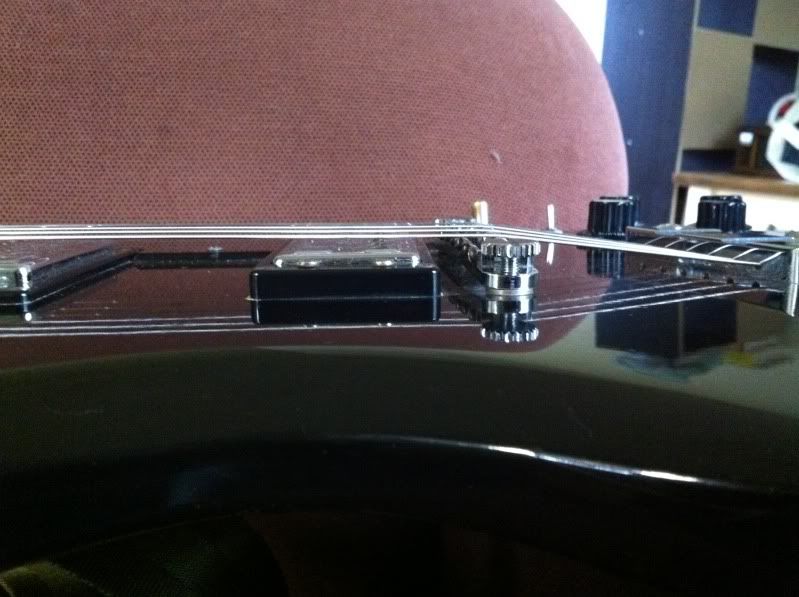- Joined
- May 10, 2012
- Messages
- 5
- Reaction score
- 0
Hi there.
I have a 1978 Guild S-100 that I quite enjoy. Sadly the action is too high at the 12th fret onwards, with the bridge all the way down. I see that after the neck joint, it slightly bends back, nothing major, but it's there.
The truss rod is adjusted with a little relief, so I suppose the only thing that I could do is get a neck reset done? Is this a normal thing to happen with older SG-style guitars?
I like everything about this guitar, but considering that repair, along with the refret it needs, I may have to let it go...
Thanks.
I have a 1978 Guild S-100 that I quite enjoy. Sadly the action is too high at the 12th fret onwards, with the bridge all the way down. I see that after the neck joint, it slightly bends back, nothing major, but it's there.
The truss rod is adjusted with a little relief, so I suppose the only thing that I could do is get a neck reset done? Is this a normal thing to happen with older SG-style guitars?
I like everything about this guitar, but considering that repair, along with the refret it needs, I may have to let it go...
Thanks.


